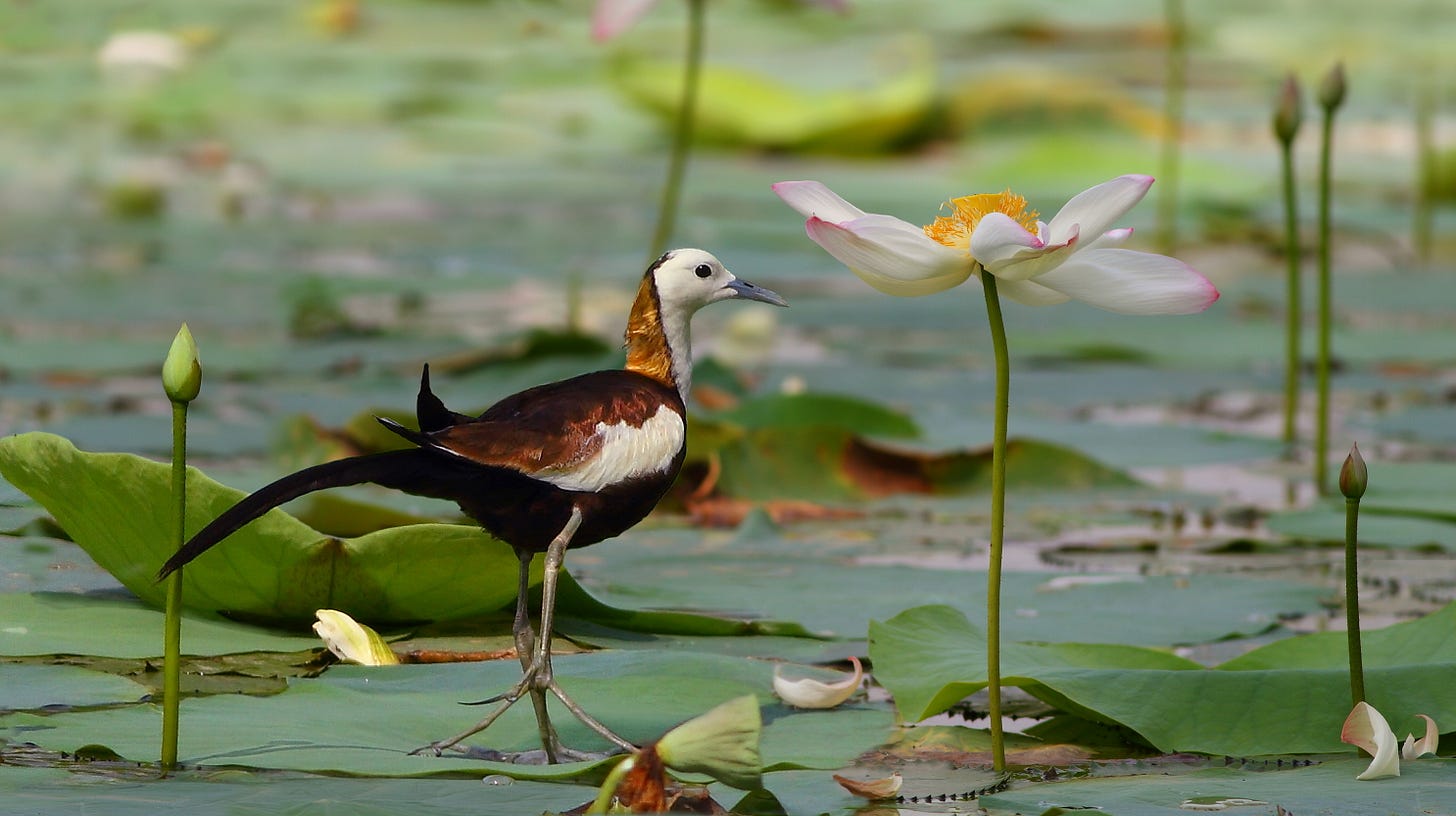The dusty road in Maroantsetra felt unusually hot and exposed, and some of the villagers were staring at us with a new kind of curiosity. The two of us—two young women—had come to town from the tiny island of Nosy Mangabe just off the coast of Madagascar, as we did every two and a half weeks or so, to resupply ourselves with rice and whatever other food we could source, and to sleep in real beds for a night. It was the beginning of the middle, or perhaps the middle of the beginning, of my longest field season in Madagascar, where I had gone to study the sex lives of poison frogs. With me was Jessica, my extraordinary, wise-beyond-her-years 17-year-old field assistant.
Madagascar is a gigantic island—fourth largest in the world, larger than California—off the east coast of Africa. The Malagasy kicked the colonial French out in the late 1960s, and then closed its borders to pretty much everyone for several decades. Just a few years before Jessica and I found ourselves in Maroantsetra, Madagascar had opened back up, and a few vazaha—white-skinned foreigners—like us had come to engage in diplomacy, or development, or research on the sex lives of poison frogs. As a result, many of the Malagasy in remote parts of the island hadn’t seen white people before.
Everything about us was indeed foreign to them, and by and large, they didn’t know what to make of us. We had friends in Maroantsetra by then, naturalist guides mostly, but even they had been known to ask if we were there for the money (of which there was none). During our forays to town, then, we were always followed by a trail of little children, eager to touch the vazaha and then run away in a mixture of hilarity and terror. Adults would often peer at us from around corners, assessing. What were those two vazaha doing out on Nosy Mangabe, anyway?
On this hot dry day, it seemed that the adults watched us for longer than usual, their expressions subtly changed.
“Does it seem that we are being eyed differently today?” I asked Jessica. She laughed.
“That’s probably because I’ve been spreading the rumor that what we are actually doing on Nosy Mangabe is starting a polyandrous society.” And she wasn’t kidding—she really had started that rumor.
Polyandry is from the Greek: poly – many, andr – male, or man. A polyandrous society is one in which women have more than one husband or mate, but men tend to have only one mate. Polyandry is rare across human cultures. Not unknown, but rare—the Nayar of southwest India, for instance, have a polyandrous system. Polyandry is rare in all animals, in fact, although some waterbirds, like jacanas and phalaropes, have made it work.
What is common across animals is polygyny (gyn – female, or woman). A polygynous society—human or otherwise—is one in which males have multiple female reproductive partners, but females tend to have only the one. A species in which polygyny is the norm, or has been in the recent past, can often be identified by the showiness of the males: they sing loudly and beautifully, or they have bright and extravagant plumage, or they build nests (or bowers, or palaces) for the females whom they woo. If a handful of males are going to end up with all the females, the males are going to have to work hard for the privilege, and elbow some of the other guys out of the way. Hence the usual pattern of male-male competition, and female choice. In polygynous human societies (and some that work at monogamy), such manifestations of sexual selection can range from petty undercutting to combat, both ritualized and impromptu.
In a polyandrous system, those expectations are reversed: females are showier, and they compete with one another for access to, or the attention of, the males. The males, once mated, settle in and often do domestic work like tending to the babies. Unlike in polygynous species, however, in which males sometimes get violent with one another in pursuit of access to mates, females in polyandrous species compete, yes, but they don’t tend to bloody one another.
So if Jessica and I had been aiming to start a polyandrous society on Nosy Mangabe, we would have been looking for men to recruit to the task. There were already two of us women; what we would need were men. When, over the many ensuing months that we continued to live and work on Nosy Mangabe, we never did try to recruit any local men to our imaginary social experiment, there may have been disappointment in some corners, but mostly, I expect, relief. Because as much as sexual access to females drives male behavior across time and space, polyandry is a bad deal for almost all men, under almost all conditions. Unless they truly had no other options, few would sign up for it.
Continuing down the Greek road for a bit: polygamy (poly – many, gamy – marriage) is often invoked when what is meant is the more precise polygyny. Polygamy comes in two flavors: polygyny (common) and polyandry (not).
And so long as we are trying to map the complete solution set of mating systems, there is also, of course, monogamy, in which individuals of both sexes tend to have only one partner; and promiscuity, in which there are no limits on how many sexual partners any individual might have. (Promiscuity, a term of art in the description of mating systems, can sometimes be conflated with the entirely human concept of polyamory which, while related, is not identical.)
Monogamy, as we will revisit in later posts, is actually the best mating system for the vast majority of individuals. Among other things, it reduces the rate of violence in a society, and increases the amount of love.
Mating systems tend to leave a mark in the morphology and behavior of species. Extravagantly beautiful and polygynous peacocks strut about trying to impress females who are far more drab. Monogamous swans twine their necks and nearly mirror each other’s movements—and which sex is which can be difficult for all but the most observant swan experts to discern. These are familiar examples of how mating systems have left marks in the morphology and behavior of species.
What is also true, however, and perhaps even more interesting, is that environmental conditions drive mating systems, and so the physical markers of polygyny-past, for instance, might well linger a while, even as a species moves towards monogamy. A currently monogamous species might, therefore, still have large and brawny males, and smaller and more gracile females, a physical reminder of our polygynous history. Another true thing we can deduce is that polyandry, being rare, means that environmental conditions that select for polyandry are also rare. Because of this, nearly all attempts to create a polyandrous society will surely fail.
This is the first in what will be a recurring but sporadic series on mating systems. Some future topics might also include: Why is monogamy common in birds, but rare in mammals? How does diet—eating fruit, versus grazing on grass—affect mating systems? How monogamous are we humans, really?
Jessica and I never did try to start her fantastical polyandrous society out on Nosy Mangabe. Not only did neither of us have an interest in it, but it would have certainly failed had we tried. Polyandry—at least that sustained long enough to be noticed and recorded by outsiders—has been observed in a tiny number of human cultures, but it is exceedingly rare. Unlike polygyny, polyandry tends to die a quick death. And unlike both forms of polygamy, monogamy enhances the well-being of nearly everyone. The tedium and misery of marriage are a standing meme in our culture, but many on the inside know that’s a false flag, and many others are, meanwhile, searching for the one who will be their life’s partner. I will explore why that is…not next week, but in a forthcoming installment on mating systems.
Subscribe for free to receive a new post in your inbox every Tuesday.






Would love for you to invite Christopher Ryan on your podcast to steel man the argument for polyamory
Marco Polo reports on some very peculiar mating systems in the territories where he traveled. It was the custom in one city, he wrote, that when travelers arrived in town, the men would offer their wives to the travelers, sometimes going off to the next town so that the new pairs could do their thing in peace. In another area, mothers would parade their daughters in front of travelers, who would take their pick to sleep with. The travelers were expected to give their choice a token, which she then wore on a necklace until he got married. Young men of the region would prefer to marry the young women who were most decorated with tokens from foreign travelers, I suppose inferring that the most decorated girls were the most desirable. Polo does not say what the fate of the children born from travelers was. I wonder whether there is any evolutionary story to tell about the function of these customs; or conversely, whether Marco was just spinning tall tales.